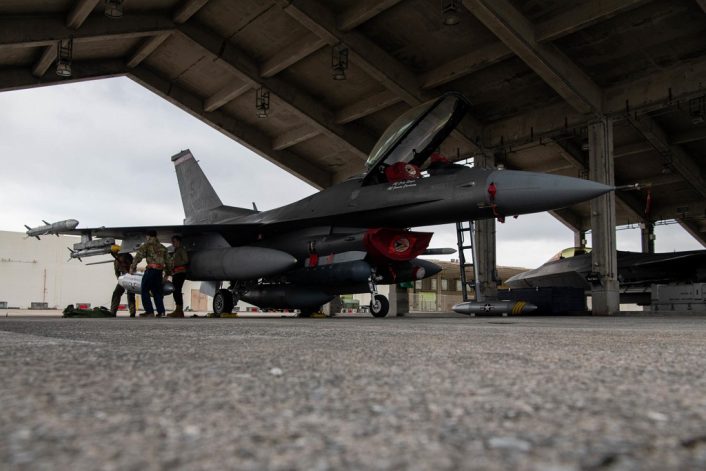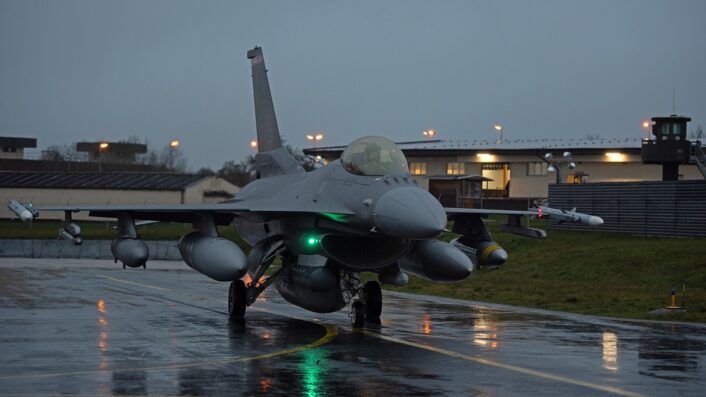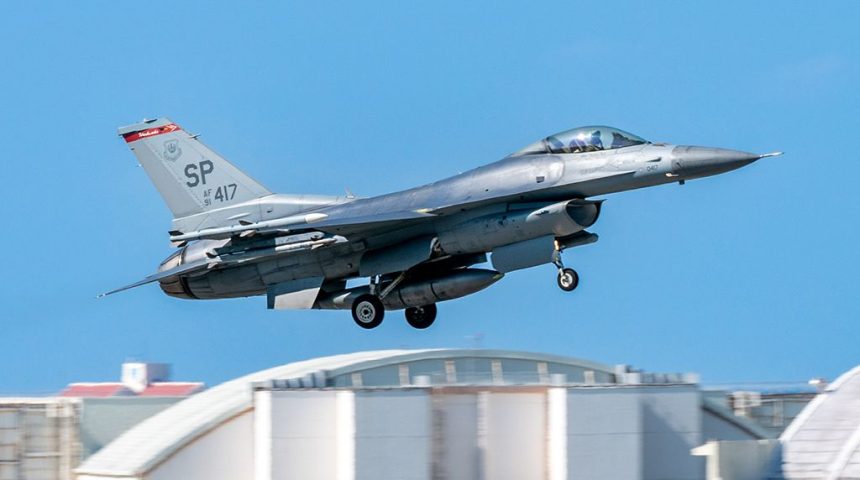The Europe-based upgraded F-16s will join Kadena’s remaining F-15s and the F-22s deployed there from Alaska.
A month after the first wave of F-15 Eagles left Kadena Air Base, Japan, and returned to the United States, F-16CMs from Spangdahlem Air Base, Germany, deployed there to support the Eagles’ phase-out and temporary replace them while the Air Force works on a permanent replacement. The F-16s of the 52nd Fighter Wing will work in conjunction with Kadena-based assets and F-22 Raptors deployed from the 3rd Wing, Joint Base Elmendorf Richardson, Alaska, to ensure continued steady-state fighter capabilities.
“We are excited to be here supporting our allies and partners in the Indo-Pacific region,” said Lt. Col. Shaun Loomis, 480th Expeditionary Fighter Squadron commander. “We look forward to training and operating in this uniquely complex and strategically vital region. Additionally, we are grateful for the opportunity to experience day-to-day life and local culture here in Okinawa.”
Twelve F-16s departed from Spangdahlem as JEST 11-16 and JEST 21-26 on January 11 and, supported by KC-135, KC-10 and KC-46 tankers, routed to Joint Base Andrews, Maryland, before continuing on to Joint Base Elmendorf Richardson. However, only eight F-16s arrived at Kadena on January 16, according to reports, while the remaining four are expected to arrive at destination at a later date.
“Since Nov. 4, deployed F-22s have employed their unique mix of stealth, super cruise, advanced avionics and sensor fusion capabilities to bring air dominance to the Keystone of the Pacific, augmenting the air-to-air capabilities of Kadena’s F-15 fleet”, said the press release. “As the F-16s begin operations, they too will integrate their unique strengths to help Team Kadena deter and, if necessary, prevail over acts of aggression that threaten peace and stability in the Indo-Pacific.”

When the first wave of F-15s left Kadena, the Air Force said the phased withdrawal of the F-15s will take place in waves over two years and, in the meanwhile, fourth- and fifth-generation fighters will rotate there in order to “maintain regional deterrence and bolster the ability to uphold treaty obligations to Japan.” The Department of Defense is working on a long-term, permanent plan for Kadena, with a replacement yet to be determined, but according to sources, it will be superior to the F-15C/D.
“These temporary deployments bring a diverse set of platforms to the region and provide the opportunity to integrate, train, and operate with our joint forces and international Allies and partners,” said Col. Henry Schantz, 18th Operations Group commander. “It is exciting to train new aircrew to operate in and around the Indo-Pacific region. The units bring their own distinct skill sets and experiences from around the globe to bolster our Allies and partners while we work together to maintain a free and open Indo-Pacific.”
While the decision to deploy F-16s from Germany to Japan might seem strange, this is in line with the DoD statements that “modernizing capabilities in the Indo-Pacific theater remains a top priority”, as Kadena’s strategic position makes it a vital staging location for forces to deter regional adversaries and project U.S. airpower throughout the Indo-Pacific. In fact, Spangdahlem’s F-16s are among the most modern of the Air Force, as last year they became the first active–duty Vipers to receive active electronically scanned array (AESA) radars.

Many are also arguing the decision because the deployment comes as Russian forces are engaged in a full-scale war in Ukraine, which is a lot closer to Spangdahlem than Kadena. We should not forget, however, that multiple fighter jet deployments are currently ongoing in Europe, so the F-16 deployment to Japan might not necessarily weaken the US posture in the area. The presence of NATO allies participating in the operations with their fighter jets and their ability to quickly deploy more, if needed, might have been another one of the contributing factors behind the decision.
Also, the Indo-Pacific is the other hotspot which is drawing attention internationally, with the continuous threats of a Chinese invasion in Taiwan and Kadena being the nearest air base from where US asset could be deployed if needed. As the US is preparing for a possible near-peer conflict over the Pacific and avoiding a direct intervention in Ukraine that could lead to further escalations, deterrence plays a big role to avoid fighting on two fronts at the same time.









